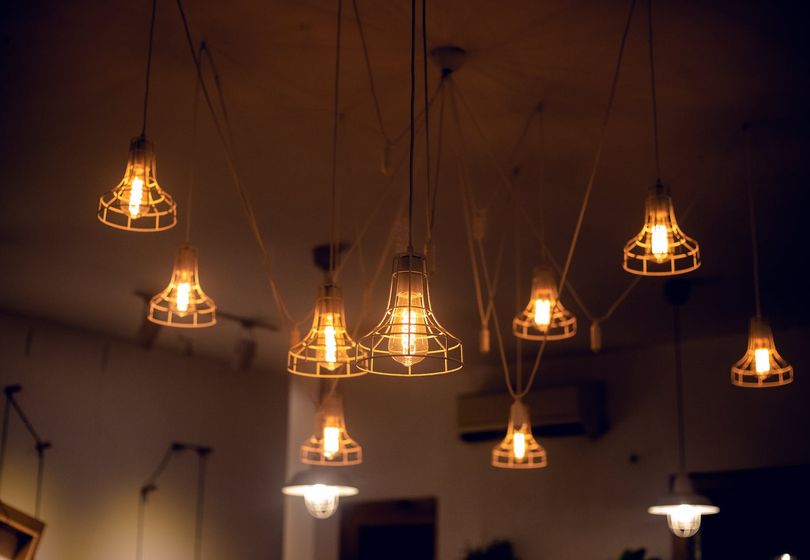
The lighting design is an important element in room lighting and contributes significantly to the atmosphere. It is not only about brightness or color temperature, but also about the targeted arrangement of light sources and lighting effects.
Layered lighting is a technique that allows creating depth and visual interest. Different layers of light are generated in a room, which suggest spatial depth through their varying brightness and color.
Lighting Planning
Layered lighting requires careful planning to create a harmonious overall structure. First, the functions of the room should be considered to create the right lighting mood. Various lighting techniques can be used, such as:
- Ceiling lighting
- Wall lighting
- Floor lighting
- Shelf lighting
- Spot lighting
Depending on the room, combinations of these lighting techniques can also be used to create a varied atmosphere.
Lighting Effects
Another important aspect of layered lighting is the various lighting effects that can be created. These include:
- Ambient lighting: The light is dimmed to create a relaxed atmosphere.
- Highlights: Specific objects or areas are highlighted through targeted lighting.
- Wallwashing: This technique creates even lighting on a wall to create a homogeneous surface.
- Uplighting: This technique creates indirect lighting from below to create a floating effect.
By using these techniques selectively, different moods can be created in the room and visual interest can be awakened.
Conclusion
Layered lighting is an important technique in lighting design to create depth and visual interest. Through careful lighting planning and the use of various lighting techniques and effects, rooms can be immersed in a atmospheric ambiance.
Products in the category

FOLKSMATE 3-Light Semi Flush Mount Ceiling Light Fixture, Drum Light with Double Fabric Shade, Modern Close to Ceiling Lamps for Living Room, Bedroom, Dining Room, Kitchen, Hallway, Entry, Foyer

Chrome Firework Flush Mount Ceiling Light Fixture, Modern Crystal Sputnik Firework Ceiling Lights, 6-Light Close to Ceiling Lighting Fixtures for Bedroom Kitchen Hallway Entryway

luckystyle Floor Lamp,Super Bright Dimmable LED Floor Lamps for Living Room, Custom Color Temperature Standing Lamp with Remote Push Button, Adjustable Gooseneck Reading Floor Lamp for Bedroom Office

TOBUSA Semi Flush Mount Ceiling Light Fixture Matte Black, Modern Sputnik Close to Ceiling Light, Chandelier Light Fixture Ceiling for Bedroom Kitchen Living Room Dining Room, 4 Light E26 Socket

Ambimall Floor Lamps for Living Room, Modern Floor Lamp with Remote Control and Stepless Dimmable Colors Temperature & Brightness, Standing Lamps for Living Room Bedroom Office, 9W Bulb Included

ONEWISH Floor Lamp for Living Room - Minimalist Industrial Standing Lamp with Modern LED Bulb, Globe Black Clear Glass 6", 1800K Warm Ambiant Lighting Decorative Tall Floor Lamp for Bedroom Office

Dimmable Floor Lamp - 3 Lights Arc Floor Lamps for Living Room, 1000LM Modern Tall Standing Lamp With Beige Shades & Heavy Base, Mid Century Tree Floor Lamp for Bedroom Office, 3 LED Bulbs Included



